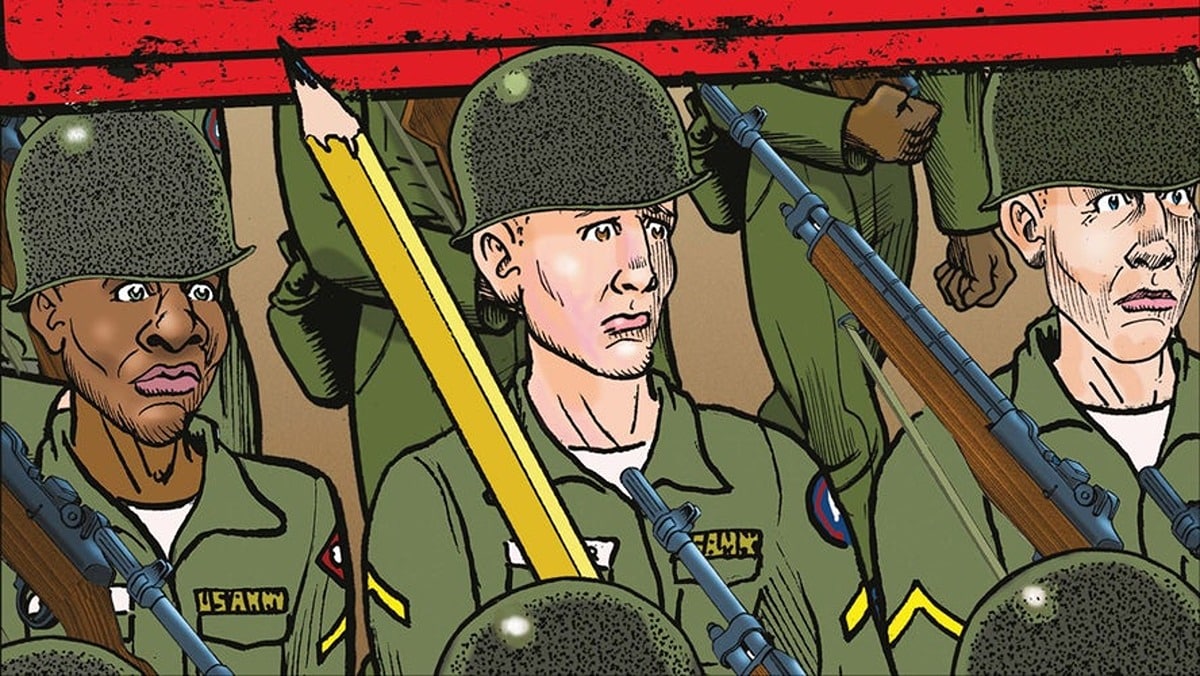The ZERO HOUR 30TH ANNIVERSARY SPECIAL enhances the original event
THIS WEEK: Revisit one of DC’s most iconic event storylines with the Zero Hour 30th Anniversary Special.
Note: the review below contains spoilers. If you want a quick, spoiler-free buy/pass recommendation on the comics in question, check out the bottom of the article for our final verdict.
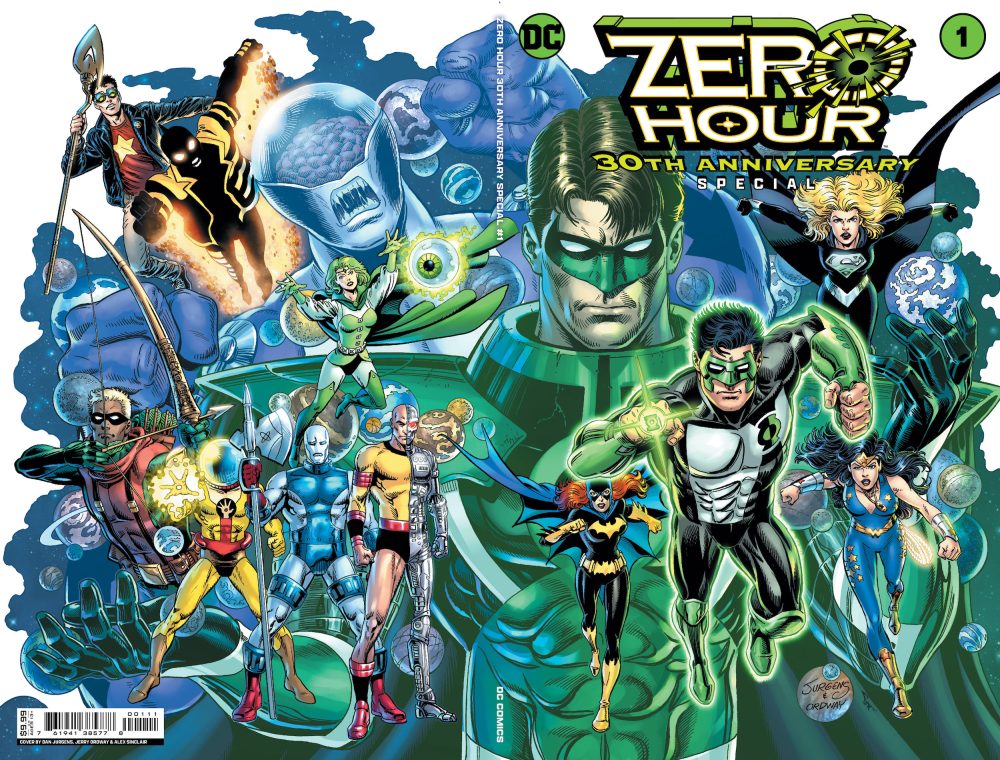
Zero Hour 30th Anniversary Special
Script: Dan Jurgens & Ron Marz
Art: Darryl Banks; Kelley Jones; Tom Grummett & Norm Rapmund; Jerry Ordway; Paul Pelletier; Howard Porter; and Dan Jurgens & Brett Breeding
Colors: Alex Sinclair
Letters: Troy Peteri
Pinups: Denys Cowan & Chris Sotomayor; Jon Bogdanove & Alex Sinclair; Tony Harris, Rick Leonardi & Matt Herms; Chris Sprouse, Karl Story, & Guy Major; and Nicola Scott & Annette Kwok
Cover Artists: Dan Jurgens, Jerry Ordway, & Alex Sinclair
Thirty years ago, timelines lived, timelines died, and the DC Universe was slightly revamped. The five-issue Zero Hour: A Crisis in Time! by Dan Jurgens, Jerry Ordway, Gregory Wright, and Gaspar Saladino was DC’s first big continuity reoganization following Crisis on Infinite Earths, an attempt to square some of the glitches that had occurred in the years since that first multiverse-erasing event had started everything over from scratch. It was a chance to revisit some things that hadn’t been seen in a while, introduce some new elements to the DCU, and provide a jumping-on point for new readers, and it’s remained a fairly well-loved event to this day. This week’s Zero Hour 30th Anniversary Special presents readers with a new tale that celebrates the legacy of the event and remains true to the spirit and themes of the original.
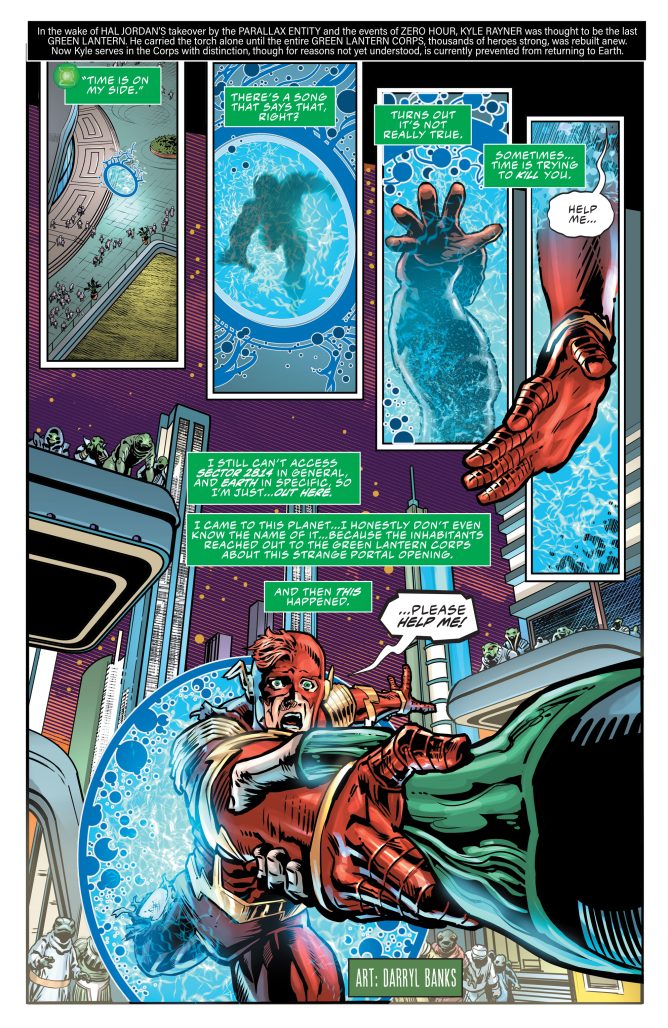
Attempting to explain 1994’s Zero Hour in a single sentence is…difficult, but here goes: The event saw the DC timeline being destroyed from both ends, with alternate timelines bleeding over into the main DCU, as the result of a plot by former Green Lantern Hal Jordan, now called Parallax after the destruction of his hometown of Coast City drove him to murder the GL Corps and absorb the energy of the main power battery, utilizing entropic energies left over from Crisis to remake the timeline in an attempt to “fix” what he deemed to be broken.
Thankfully, you don’t really need to know any of that coming into this week’s one-shot. Original series writer Jurgens is joined by then-Green Lantern scribe Ron Marz for a story that follows Hal Jordan’s replacement, Kyle Rayner, into an alternate timeline with an unexpected tie to the original event. The story follows familiar crossover beats, mirroring the events of the original series in significant ways, for better or worse. The Kyle Rayner of this story is from the present DC Universe, but his confusion about the situation feels out of character for a seasoned Green Lantern who has traveled the multiverse and visited other worlds and dimensions numerous times before. The heroes of the alternate timeline also have a real ‘punch first, ask questions later’ mentality about Kyle that makes for a lot of frustrating repetition whenever he meets someone new. Once those familiar tropes are out of the way, though, Jurgens and Marz’s script is incredibly solid, with a number of unexpected twists and a powerful, emotionally resonant final act.
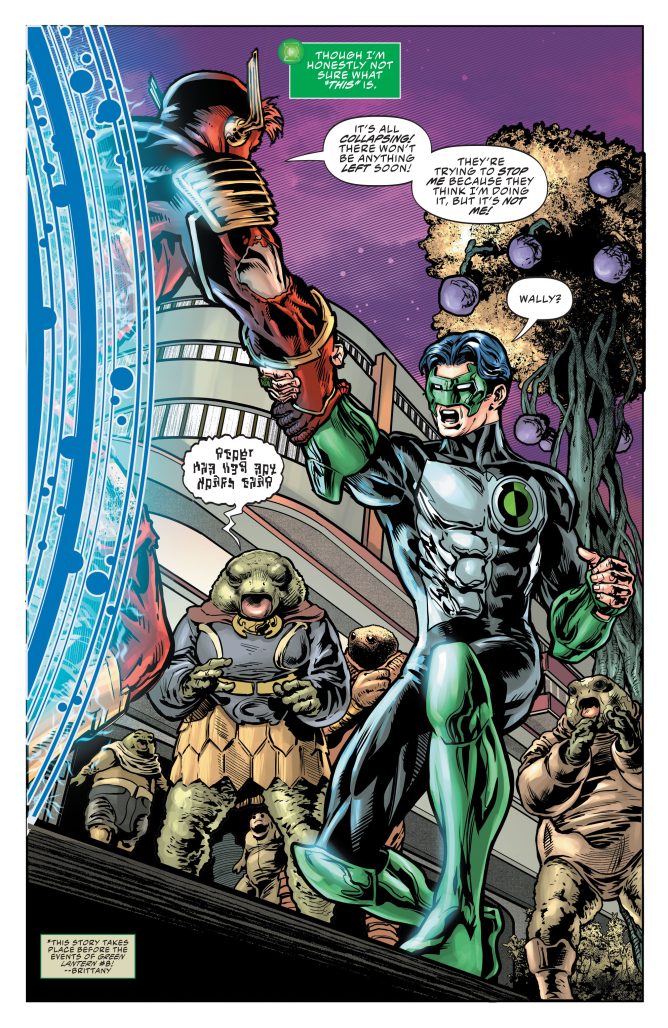
The art on this issue comes from a collection of seven different artists or teams, most of whom worked on either the original series or its many tie-ins. Most of those artists, from original event creators Jurgens and Jerry Ordway to ‘90s Green Lantern artists Darryl Banks and Paul Pelletier to contemporary tie-in artists Tom Grummett and Howard Porter, have fairly straight-forward styles and strong storytelling abilities, which combined with the consistent coloring of Alex Sinclair makes for a smooth reading experience. The outlier here is Kelley Jones, who was not a part of the original event and whose style clashes wildly with that of the other assembled artists. That’s not to say this is inherently an issue, as Jones illustrates the book’s second chapter, in which Kyle Rayner finds himself in the alternate timeline, and the jarring shift from opening artist Darryl Banks to Jones mirrors for the reader Kyle’s own disorientation at finding himself in a strange environment. When taking the book as a whole, though, Jones’s contribution feels somewhat out of place, and his anatomy feels loose even by the standards of typical Kelley Jones work. It’s a hiccup in a book whose visuals are otherwise strong throughout.
Other anniversary one-shots have chosen to revisit the time period of the original story, but the Zero Hour 30th Anniversary Special takes a different tack, adding a new, previously-unseen layer to the event. It’s a fun twist that’s worth experiencing fresh, and it harkens back to DC continuity in an unexpected way. It also echoes and reinforces the themes of sacrifice and what it means to be a hero that the original event explored so well in its conclusion. It’s a refreshing change of pace from other throwback books, and it deftly puts new pieces on the board for others to pick up on in future stories.
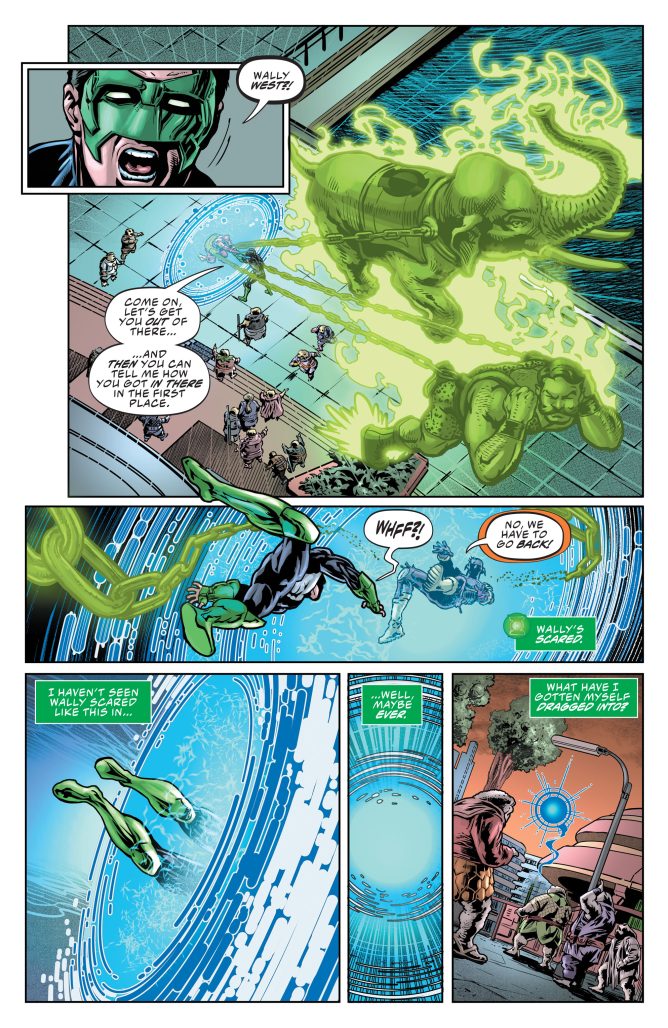
The Zero Hour 30th Anniversary Special is a great read for fans both familiar with the original event and new to the timeline-altering story. Jurgens, Marz, and co. weave an entertaining, accessible adventure that pays tribute to what’s come before while still doing something new with it. It’s easily DC’s best anniversary special yet.
Final Verdict: BUY.
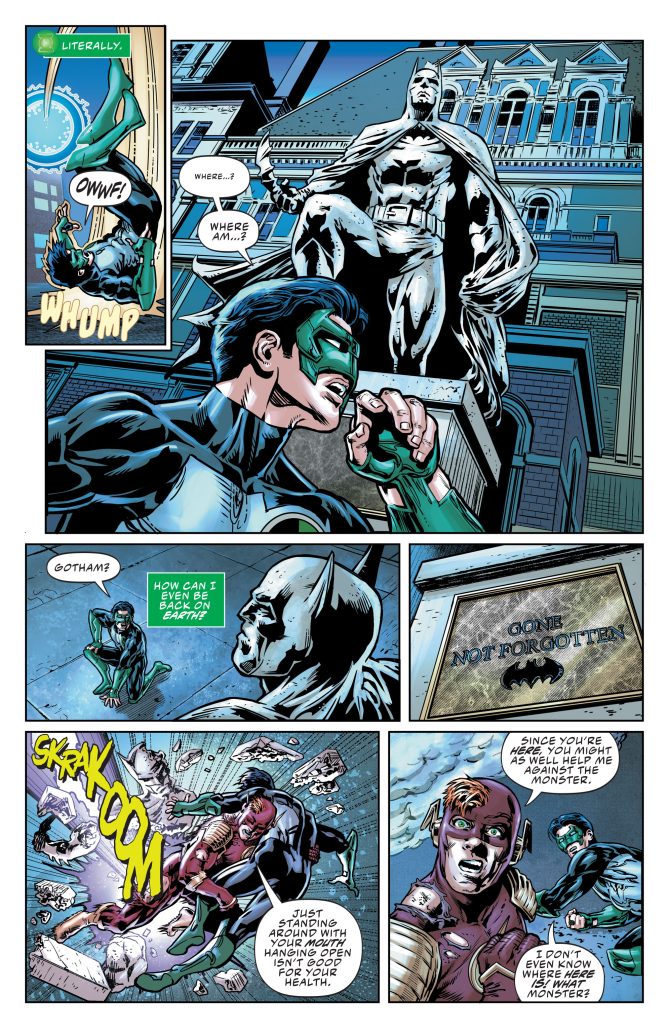
Round-Up
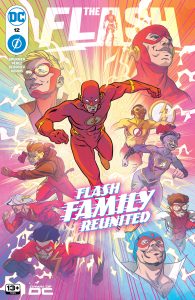
- The last few issues of The Flash have started to offer some answers to what’s been going on in Wally West’s world, and this week’s The Flash #12 is no different. The teasing out of this storyline by writer Si Spurrier, joined here by artists Ramon Pérez and Vasco Georgiev, has been tantalizing, but after this issue it feels like most of the critical cards have been shown, and all that’s left is the high-speed superheroism. It’s been a wild ride and it’ll be interesting to see where it all goes.
- In other Flash-related news, Absolute Power: Task Force VII #5 finds Barry Allen up against Amanda Waller’s superspeedster Amazo. Alex Paknadel has written a handful of Flash stories in the past, but this may be his best, exploring the human element of what it means to travel faster than light. Pete Woods’s visuals are spectacular, alternating between Central City, the inside of the Speed Force, and scenes from Barry’s past without missing a beat. The concluding pages introduce a new and exciting element to the overall Absolute Power arc that ties back to previous Amanda Waller stories nicely. Just a well-done, entertaining comic.
- On the Black Label side of things, Zatanna: Bring Down the House #3 continues the story of Zee’s early days in delightful fashion. Mariko Tamaki’s dialogue is sharp and natural, and Javier Rodriguez’s art is finally going all out with wild page designs and some truly surprising, disturbing, and hilarious imagery. I could’ve lived without the final page reveal and kept the focus firmly on Zee, but I’m also willing to see where this creative team takes me.
- The second issue of James Tynion IV and Álvaro Martínez Bueno’s The Nice House By The Sea picks up prior to the conclusion of last month’s first issue, showing what the familiar cast of characters from the previous series on the Lake has been up to since that book ended. Slow burn comics at their finest.
Miss any of our earlier reviews? Check out our full archive!

Source link
